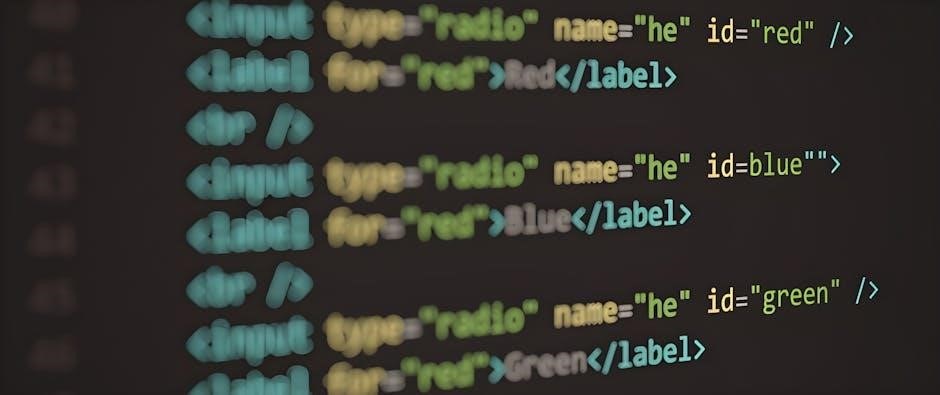informatik pdf markup
Overview of Markup Languages
These languages provide a way to add annotations, comments, and other metadata to documents, making them more interactive and dynamic, with features such as text annotations, watermarks, and redactions.
XML is a specification for designing markup languages, allowing users to create their own custom languages, and is used in various applications, including Informatik PDF markup, which enables users to mark up single-page and multi-page PDF files with various options.
The use of markup languages has become increasingly important in the field of Informatik, as they provide a way to structure and format complex data, making it easier to analyze and understand, with applications in areas such as data mining and document management.
HTML evolved from simple language to additional features with tables and image maps using HTML tags for encoding information online always with new versions.
The evolution of HTML versions has been significant, with new features and updates being added regularly. Later versions, such as HTML 2.0, introduced additional features like tables and image maps. The evolution of HTML versions has played a crucial role in shaping the internet as we know it today, with HTML being used to create web pages and online applications. Overall, the evolution of HTML versions has been a key factor in the development of the internet and online technology.

PDF Markup Program
Features of PDF Markup
The features of PDF markup include a range of tools and options that allow users to interact with and modify their PDF files. These features include text annotations, which enable users to add notes and comments to their documents. Additionally, PDF markup offers watermarking capabilities, allowing users to add custom watermarks to their files. Other features include redactions, highlighting, and rubber stamps, which provide users with a flexible and customizable way to edit and enhance their PDFs. The program also supports encryption, ensuring that sensitive information remains secure. With its comprehensive set of features, PDF markup is a powerful tool for anyone working with PDF files, providing a user-friendly and intuitive interface for editing and annotating documents. The features of PDF markup are designed to be easy to use, making it accessible to users of all levels.

Informatik and PDF Markup Intersection
Importance of Markup Languages in Informatik
PDF Markup Options
Types of Annotations in PDF Markup
PDF markup provides various types of annotations, including text annotations, watermarks, and redactions, which can be used to add comments, highlight important information, and protect sensitive data.
These annotations can be customized using different colors, fonts, and sizes, making it easier to distinguish between different types of comments and feedback.
The program also supports freehand drawing, lines, arrows, and shapes, allowing users to create complex annotations and diagrams.
Additionally, PDF markup allows users to add stamps, such as “approved” or “rejected”, to indicate the status of a document.
Overall, the types of annotations available in PDF markup make it a powerful tool for collaborating and reviewing documents. This feature is particularly useful in informatik applications where document review and collaboration are essential.

XML-Based Markup Languages
The Petri Net Markup Language is an XML-based interchange format for Petri nets, supporting any version of Petri net since new types can be defined using XML tags;
PNML allows for the creation of complex data structures and standards, making it a significant tool in the field of markup languages and informatik.
With its ability to support various Petri net types, PNML provides a flexible and versatile solution for modeling and analyzing complex systems, and its use of XML tags ensures compatibility and ease of use.
The introduction of PNML has paved the way for further research and development in the field of Petri nets and markup languages, and its applications continue to grow and expand into new areas.
As a result, PNML has become an essential tool for anyone working with Petri nets and markup languages, and its importance will only continue to grow in the future.

